In this blog post, we’ll explore the compelling reasons to include Belém in your Lisbon itinerary, delve into the rich historical background of Belém and uncover its top tourist attractions.
Lisbon is home to many diverse districts: from the quaint alleys of Alfama, the colorful street Bairro Alto and the vibrant nightlife of Bairro Alto, each district has its own history and character. Amidst this mosaic lies Belém, a gem that shines with its tranquil charm and historic significance.
Keep Reading // 11 Amazing Things to do in Lisbon
Nestled along the banks of the Tejo Estuary, Belém tells tales of Lisbon’s maritime legacy. Once bustling with the echoes of shipyards and the footprints of explorers, it was here, in the 16th-century, that the first European explorers set sails to find a maritime route to Asia starting what we now call the Age of Exploration.
Unlike the other districts which are walkable distance from each other, getting to Belém will require that you take public transportation. But trust me, it’s worth the trip. Once you’re there, you’ll find a laid-back vibe that’s a world away from the hustle and bustle of central Lisbon.
The best part? Belém is super easy to navigate on foot, and many of the must-see attraction in Lisbon is right here. So, if you’ve got a couple of days to spare in Lisbon, Belém is definitely a spot you don’t want to miss.
Ready to dive in? Here’s a rundown of how to make the most of a day in Belém, plus some tasty tips on where to grab a bite while you’re there. Let’s go!
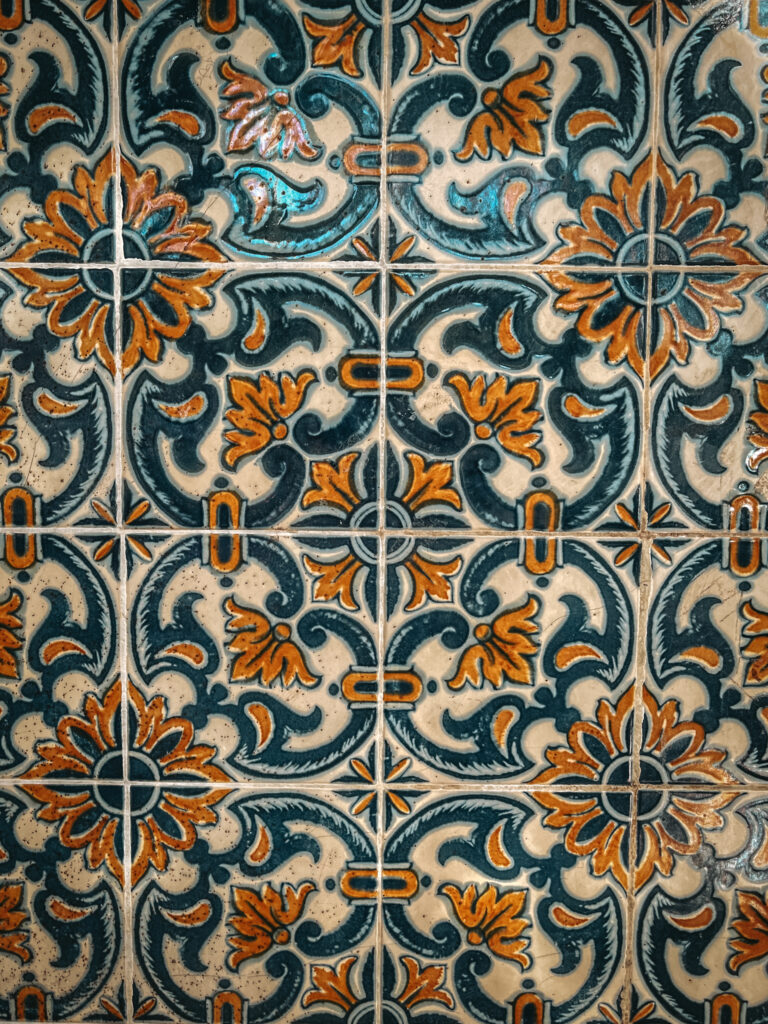
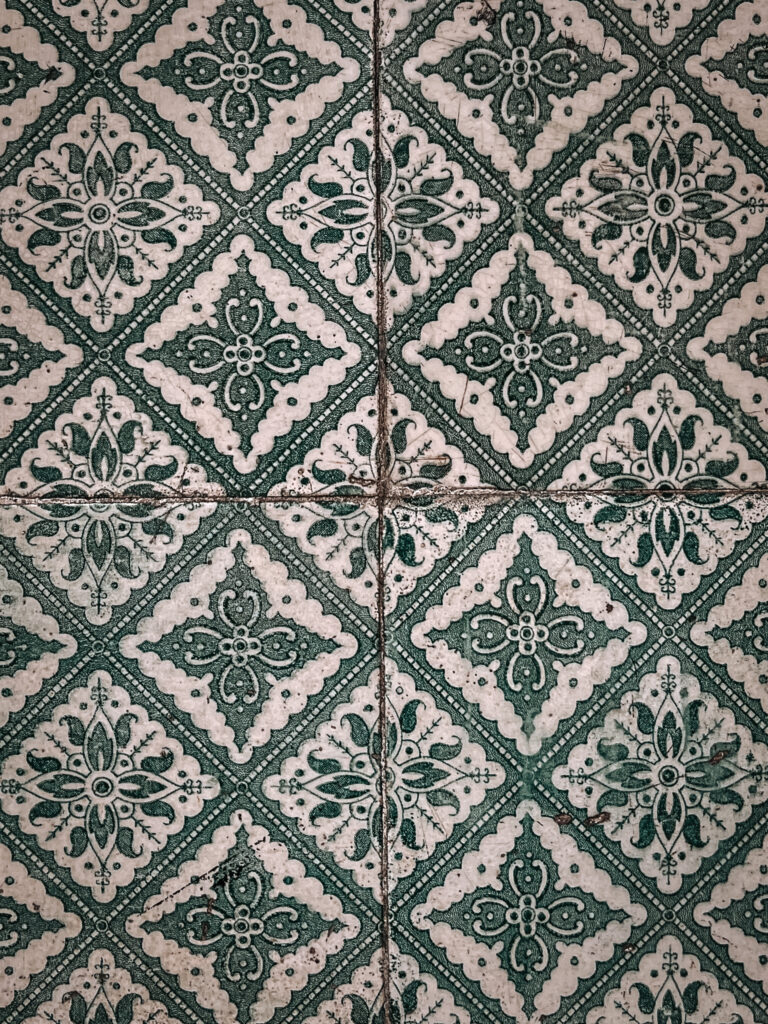
HOW TO MAKE THE MOST OF YOUR VISIT TO BELÉM
HOW TO GET TO BELÉM?
From Lisbon center, the easiest way to get to Belém is by using public transportation : whether it be the train, the tram of the bus.
Located 9km from dowtown Libson, the district of Belém is not as walkable as the other districts. There are 3 ways to get from Lisbon center to Belém :
- The easiest and most convenient way to reach Belém is by hopping on the train departing from Cais do Sodré Station to Cascais. The train leaves approximately every 20 minutes, and in just 7 minutes be at Belém station. But here’s a heads up: since this train also heads to the beaches, expect some queues at the ticket counters and machines, especially between April and October.
- The most popular way to get to Belém however is with via tram (number 15), which starts its journey from Praça da Figueira, passing through Praça do Comércio and Cais do Sodré. The journey to Belém will take approximately half an hour. Keep in mind, though, it tends to get quite crowded, often leaving passengers standing for the entire ride.
- Finally you can take the bus to Belém : you can take number 714 that departs from Praça da Figueira, hop on the 728 that stops outside the Cais do Sodré train station, or on the 727 on Rua Braamcamp by the Marquês de Pombal traffic circle. The bus takes the same amount of time to get to Belém as the Tram.
Travel Tip // When riding this tram, note that tickets aren’t purchased directly from the driver but from machines inside the tram that only accept coins. If like me you never have change on you, then you can buy a public transport day pass inside the metro stations. If you’ve got the Lisbon Card, simply scan it and hop on board for a free ride.
Keep Reading // Wondering if you should get the Lisbon Card or not? Ready my 14 Things to Know Before Visiting Lisbon !
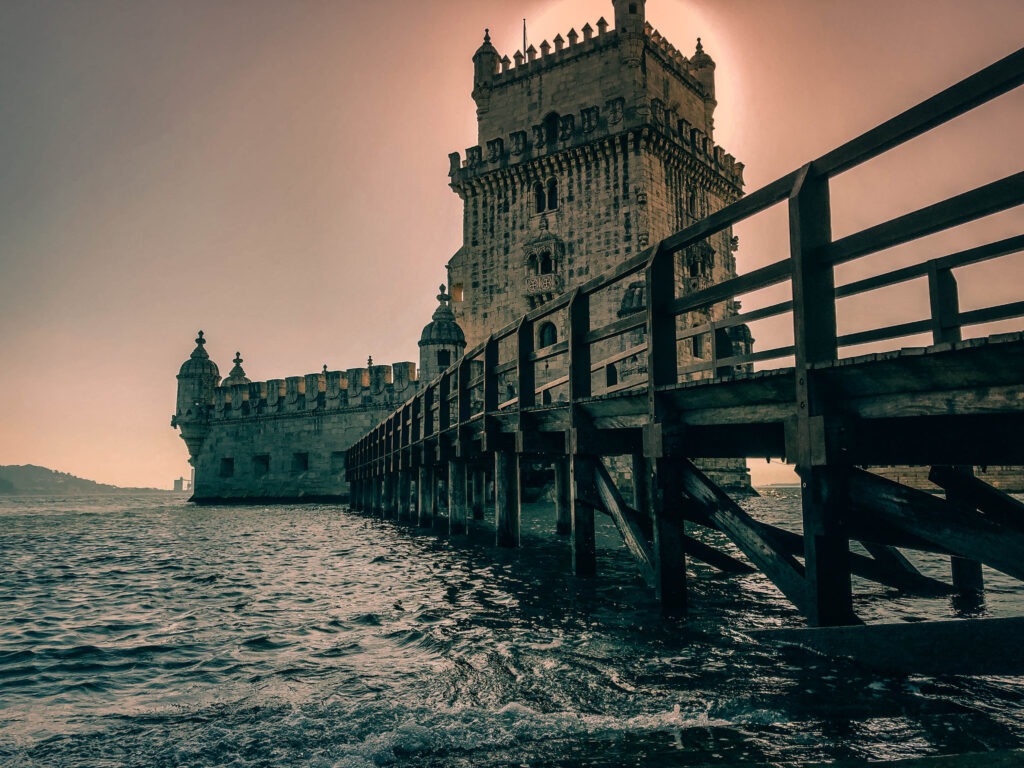
WHAT SHOULD YOU SEE AND DO IN BELÉM?
Two of the most important sites in Lisbon are here in Belém : the Jerónimos Monastery and Belém Tower. However, there are many more things to do in Belém. Visitors can also enjoy exploring the Monument to the Discoveries, and the National Coach Museum. And for the foodies: you cannot leave Belém without trying their famous Pastéis de Belém!
THE JERÓNIMOS MONASTERY
The Jerónimos Monastery stands as a tribute to Portugal’s golden age of exploration during the 15th and 16th centuries. The construction began in 1501 under the patronage of King Manuel I and spanned over a century. It was financed mainly by the lucrative trade in spices, jewels, and other treasures flowing into Portugal from distant lands.
Fun Fact // Did you know that it was within the cloistered walls of this monastery that the original recipe for the beloved Portuguese Custard Tart, the Pasteis de Belém, was born?
The Jerónimos Monastery stands as a testament to the exquisite beauty of Portuguese Late Gothic Manueline architecture, a style renowned for its fusion of Gothic, Renaissance, and Moorish influences. Adorned with intricate details and maritime motifs, the monastery’s exterior reflects Portugal’s deep-rooted connection to the sea, navigation, and exploration.
Today, it is a UNESCO World Heritage Site, and one of the most popular places to visit in Lisbon.
Travel Tip // In a nod to its enduring legacy, the monastery’s west wing now houses the Maritime Museum.


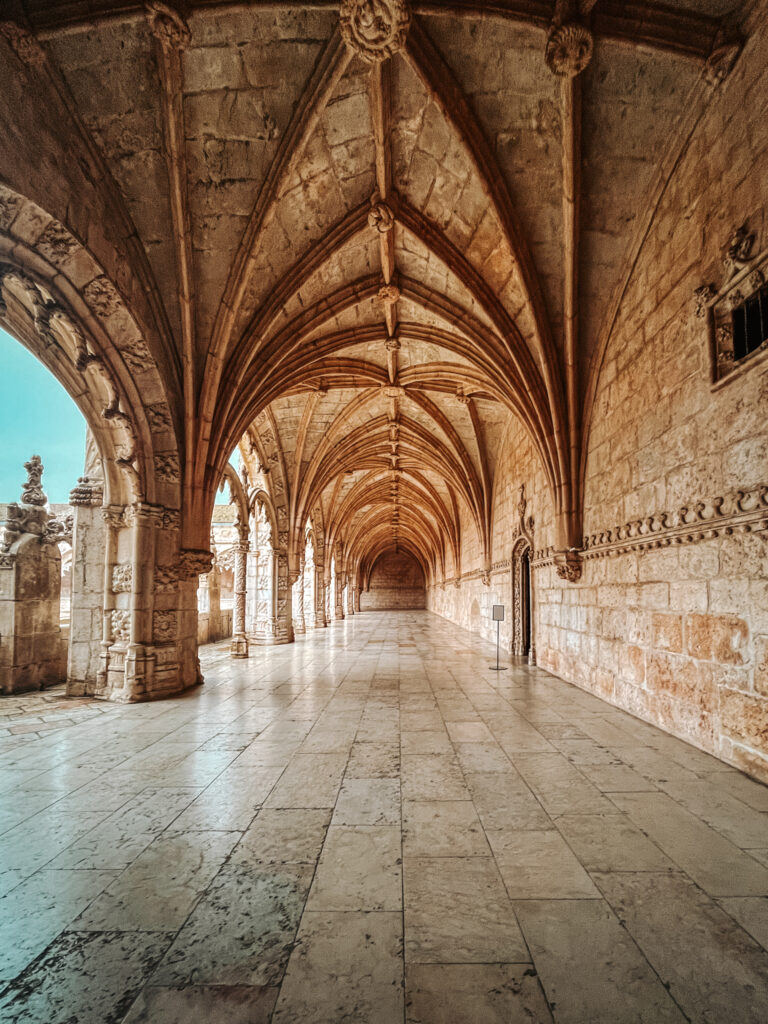
THE DETAILS
Where | The Jerónimos Monastery is located on the Praça do Império in Belém. Find the entrance here on Google Maps. It is also where you will find the ticket kiosk.
Price | Entry is €12 per person. You can purchase advance tickets here.
The entry is included in the Lisbon Card.
When | The Monastery is open every day of the week, expect for Mondays, from 10am to 5:30pm. It is closed on Mondays.

THE BELÉM TOWER
By the dawn of the 16th century, Portugal had risen as the preeminent force in European maritime exploration, taking control over crucial trade routes to Southeast Asia and dominating the lucrative global spice trade. To safeguard this newfound dominance, King Manuel I commissioned a formidable fortification to protect the Portuguese coast from potential invaders.
Tasked with this monumental endeavor was architect Francisco de Arruda, renowned for his mastery in fortress design across Portugal and North Africa. Constructed in the same Manueline style – a variant of late Gothic and Moorish architecture – as the Jerónimos Monastery, this tower is a true masterpiece. The tower, named the Tower of São Vicente in homage to Lisbon’s patron saint, boasted innovative military architecture, featuring strategically positioned artillery emplacements across two floors.
As the tides of history shifted, Portugal found itself under the rule of King Philip II of Spain, leading to the tower’s transformation from a bastion of maritime defense to a state prison. The tower’s dungeons housed prisoners until the mid-19th century.
In recognition of its historical significance, the Belém Tower was declared a National Monument in 1907 and earned UNESCO World Heritage status in 1983. Today, it stands proudly as one of Portugal’s seven wonders, a testament to the maritime prowess and enduring legacy of the Portuguese Empire in the 16th century.
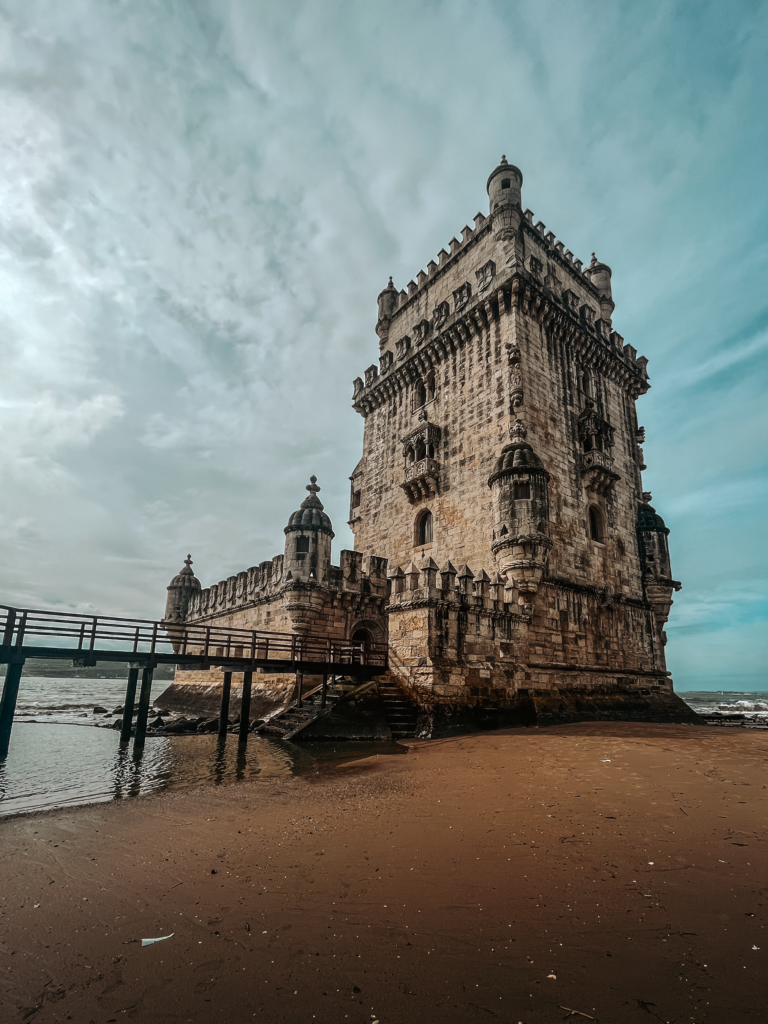
THE DETAILS
Where | The Belém Tower is located between the Belém Gardens and the Tagus River. Find it here on Google Maps.
Price | Entry is €8 per person. You can purchase advance tickets here.
The entry is included in the Lisbon Card.
Travel Tip // While you can visit the inside and climb the Tower, I don’t recommend it. On my first solo visit to Lisbon I waited in line a very long time to see the inside and I was quite disappointed. There is no furniture and the view is not particularly interesting. For that reason I would suggest you save some time and just admire the Tower from the outside. Try visiting at sunset the best photo opportunities.
THE MONUMENT OF DISCOVERIES
Not far from the Belém Tower, you’ll find the Monument of Discoveries. This monument is an ode to the Portugal’s Age of Discoveries which lasted from the 15th to the 17th century. First built in 1940, in a temporary form, as part of the Portuguese World Exhibition, it was reconstructed in 1960 to mark the 500 years sing the death of Henry the Navigator, the Portuguese Prince, who financed most of the expeditions and is often describe has the one who launched the European Age of Exploration.
Made to look like an exploration ship, the monument displays many men – sailors, poets, cartographers, etc. – who played a key role in Portuguese exploration. At the head of the “ship” is Henry the Navigator.


THE DETAILS
Where | The Monument of Discoveries is located just a few minute walk from the Belém Tower. You can find it here on Google Maps.
Price | Entry is €10 per person. This includes an exhibition, a film and a lookout. You can purchase advance tickets here.
You get a 20% off discount with the Lisbon Card.
TRY PASTÉIS DE BÉLEM
Of course, You can’t visit Belém without trying some of the famous Pastéis de Belém. Now, despite what some will tell you, there is no difference between the Pastéis de Belém and the Pastéis de Nata. Historically, the Pastéis de Nata were invented in the Belém neighbourhoods of Lisbon, hence their name when you visit Belém.
Here’s how the story goes:
The monks of the Jerónimos Monastery in Belém were the pioneers behind the creation and distribution of the famous custard tarts. As the monks utilized egg whites for starching clothes and fabrics, they ended up with an abundance of leftover egg yolks. Rather than letting them go to waste, they ingeniously incorporated the yolks into their culinary creations, including cakes and pastries.
After the Liberal Revolution of 1820, the financial support for religious institutions in Portugal ceased, leading to their closure. In order to generate some income, the enterprising monks began selling their beloved custard tarts to the public. They decided to sell the custard tart recipe to a local sugar refinery. Recognizing the immense potential of this delectable treat, the refinery owners wasted no time and established the Fábrica de Pastéis de Belém in 1833.
But do the Pastéis de Belém live up to the hype? They are good yes, but definitely not the best Pastéis in Lisbon in my opinion.
Keep Reading // For recommendations on where to find the best Pastéis de Nata in Lisbon check out my 11 Amazing Things to do in Lisbon.
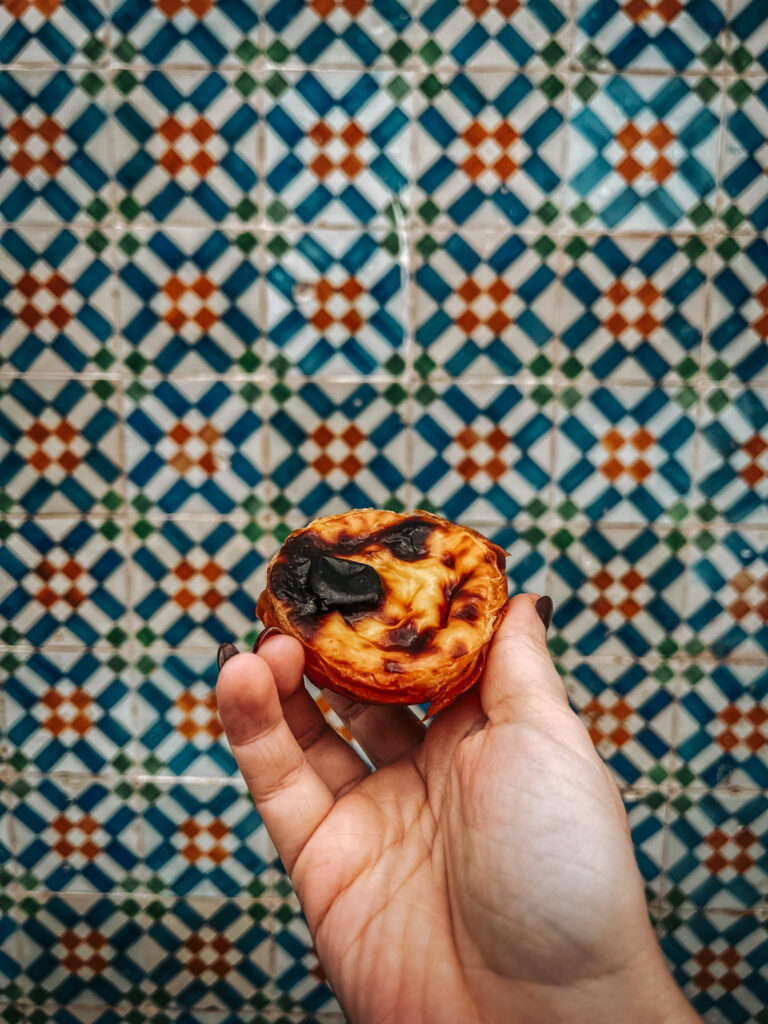
THE DETAILS
Where | Pastéis de Belém | They might not be my favorites, but they are the OG pastéis de Nata so you have to try them at least once.
Travel Tip // To skip the line use the take out door instead of the one to sit in the restaurant. Get as many pastéis as you wish and you can go eat them in the park right in front of the bakery.

VISIT SOME MUSEUMS
Belém also houses numerous museum that are worth checking out during your visit. These are great to do on a rainy day!
THE NATIONAL COACH MUSEUM | Housed in an old Horse Riding Area built sometimes after 1787, the National Coach Museum displays one finest collections of historical carriages in the world. Established in 1905 by Queen Amélia, the original museum was conceived to showcase the magnificent collection of carriages once owned by the Portuguese royal family and aristocracy. The museum provides a comprehensive overview of carriage evolution from the late 16th to the 19th centuries, featuring exquisite examples crafted in Italy, Portugal, France, Spain, Austria, and England.
Where | The National Coach Museum is located a short walk away from the Monument of Discoveries. You can find it here on Google Maps.
Price | Entry is €8 per person. It is not possible to purchase your tickets online, but you can find more information about your visit on the Museum’s website. The entrance is free with the Lisbon Card.
THE MUSEUM OF ART, ARCHITECTURE AND TECHNOLOGY (MAAT) | Opened to the public in 2016, the MAAT is one of the newest museums in Lisbon. The MAAT building was ingeniously designed to harmonize with its surroundings, seamlessly blending structure and landscape to offer a dynamic experience for visitors. Atop the building, a rooftop plaza serves as a public gathering space, accessible via a footbridge that spans over the railway, granting unparalleled views of Lisbon and the majestic River Tagus. Meanwhile, the south façade, adorned with nearly 15,000 three-dimensional tiles, interacts with natural light, creating mesmerizing reflections that evolve with the seasons and time of day. Inside, you will find the most impressive collection of contemporary Portuguese art.
Where | You can find the MAAT here on Google Maps.
Price | Entry is €11 per person. You can purchase advance tickets here. The entrance is free with the Lisbon Card.
THE MUSEUM OF CONTEMPORARY ART |Even newer then the MAAT is the Museum of Contemporary Art which opened its doors in 2023. This Museum houses one of Europe’s best modern and contemporary art Collection. Most of it was amassed by Portuguese businessman Joe Berardo and includes pieces by Andy Warhol, Picasso, Joan Miró, Jeff Koons, and Paula Rego.
Price | Entry is €12 per person. You can purchase advance tickets here. You get a 20% off discount with the Lisbon Card.
Where | You can find the Museum of Contemporary Art here on Google Maps.
THE MARITIME MUSEUM |Located in the West wing of the Jéronimo Monastery, the Maritime Museum dedicated to all aspects of the history of navigation in Portugal. The exhibits include historical paintings, archaeological items and many scale models of ships used in Portugal since the 15th century, a collection of navigations instruments and maps, royal barges, as well as the Fairey III “Santa Cruz” that crossed the Atlantic in 1923, and the Portuguese Navy’s first aircraft, an FBA Type B flying boat.
Where | You can find the Maritime Museum hre on Google Maps.
Price | Entry is €7 per person. It is not possible to purchase your tickets online, but you can find more information about your visit on the Museum’s website. You get a 33% off discount with the Lisbon Card.


WHERE SHOULD YOU EAT IN BELÉM?
Due to its rich maritime heritage, the Lisbon suburb of Belém draws in a steady stream of visitors, eager to explore its historical treasures. However, along with the influx of tourists comes a proliferation of overpriced tourist-trap restaurants, eager to capitalize on the foot traffic. However, here are a few address that are worth trying on your visit to Belém:
Este Oeste : Located in the Centro Cultural de Belém, this restaurants is a good example of ‘East meet West’ with a selection of wood-fired pizza and fresh Japanese sushi. Don’t forget to check out their beautiful patio with a view on Belém’s riverfront.
À Margem : Nestled along the Tagus River, this trendy, minimalist restaurant-bar offers stunning vistas of the waterfront. With a diverse menu spanning from savory petiscos (small snacks), flavorful bruschetta, and hearty vegetarian options, there’s something to tantalize every palate. While not budget-friendly, À Margem offeres a delightful dining experience amidst breathtaking surroundings.
Restaurante Feitoria : This is also not a budget-friendly option! However, if you’ve been dreaming of trying a Micheline star restaurant, this one is for you. In theme with the history of Belém, the restaurant’s decor is inspired by the Portuguese Age of Exploration and its menu mixes fine Portuguese cuisine with a touch of Asian influences.
Andorinhas : Perched along the steep road from Belém towards Ajuda, this hidden gem is a beloved local address offering budget-friendly lunches and dinners. Step inside to find a bustling back room filled with locals enjoying generous portions of authentic Portuguese cuisine.
READ THESE POSTS BEFORE VISITING LISBON!
LISBON GUIDES | 11 Amazing Things to do In Lisbon; 14 Things to Know Before Visiting Lisbon; 1 day, 3 castles: How to make the best of your day in Sintra; 5 tips for riding Tram 28 in Lisbon; Where to Stay in Lisbon?
LISBON PHOTOS | 30 amazing photos of Lisbon
THE REST OF PORTUGAL | 11 amazing things to do in Porto; 9 amazing things to do in Lagos
PIN FOR LATER
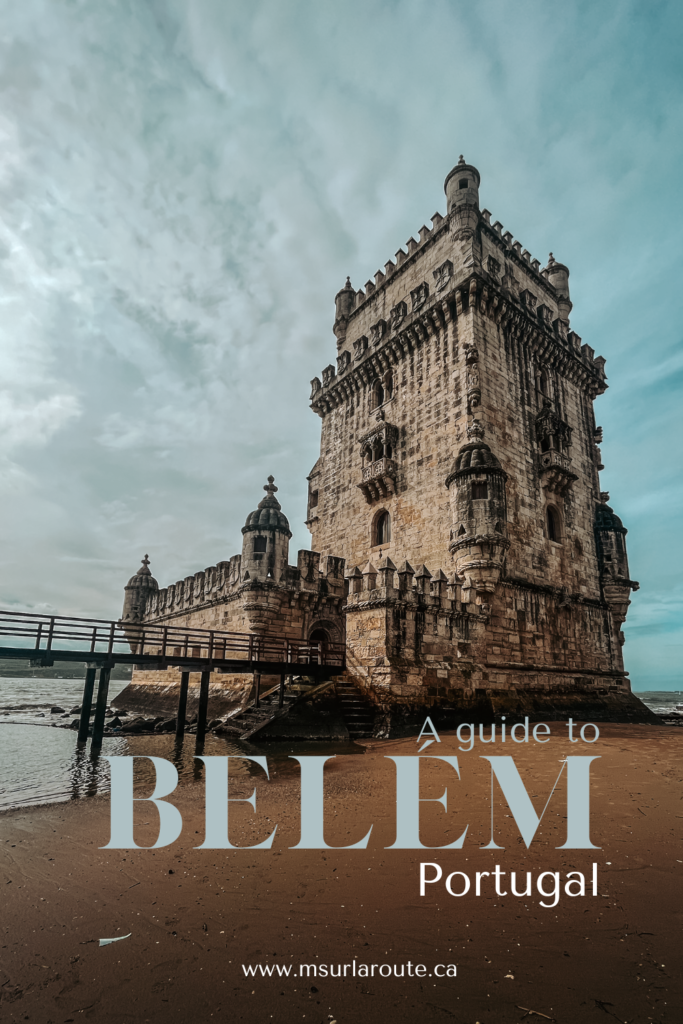
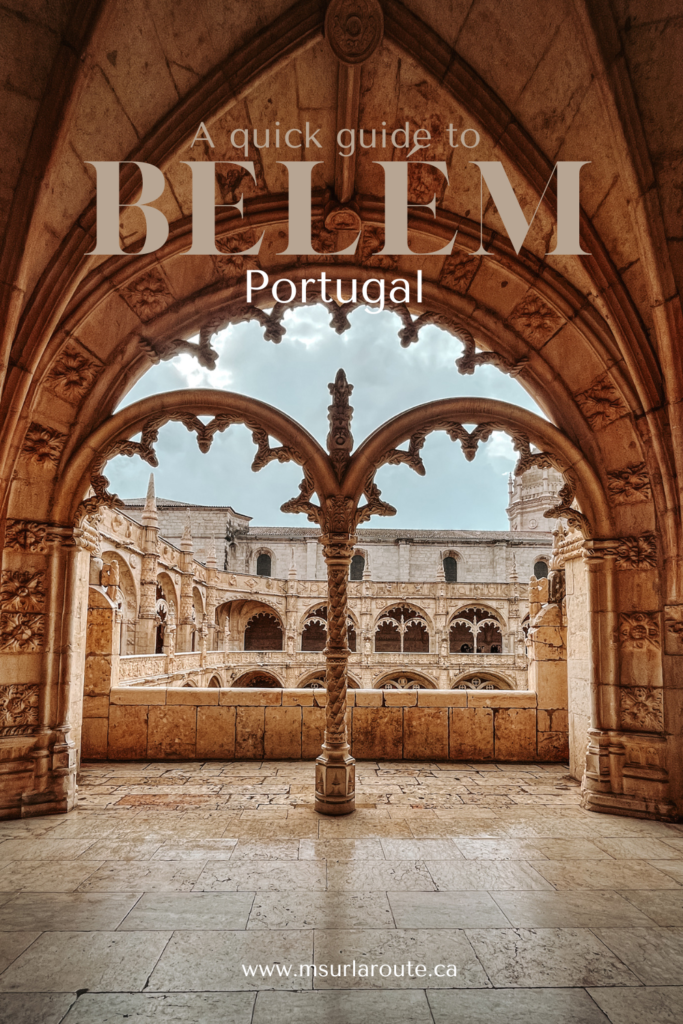

Follow me on Instagram!
Want to touch the southernmost point of mainland Canada? 👇🇨🇦
Then Point Pelee National Park needs to be on your summer list.
From epic sunsets and peaceful marsh boardwalks to migrating birds and butterflies, this park packs a lot into a small space.
In this quick guide:
📍 What to do
🗓️ Best time to visit
⛺ How to camp (hint: it involves oTENTiks)
🦋 And a few cool facts to impress your road trip buddy
Save this for later & tag someone who’d love to stand at the tip of Canada with you 🌊
🇫🇷 La version française de ce texte se trouve dans les commentaires.
#PointPeleeNationalPark #ExploreCanada #TravelOntario #ParksCanada #BucketListTrip #OntarioRoadTrip #NatureEscape #BirdingSeason #WanderOntario

Did you know Peterborough & the Trent-Severn Waterway made the New York Times list of 52 Places to Visit in 2025?
After a weekend exploring the area… I get it. Here’s what makes it one of Ontario’s best summer road trips ⬇️
🌿 Walk with alpacas at a local farm
🚤 Cruise through the world’s highest hydraulic lift lock
🍷 Sip sangria + eat wood-fired pizza at a vineyard
🛶 Visit the brand-new Canadian Canoe Museum
🌄 Hike through caves & forests at Warsaw Caves Conservation Area
🥧 Taste-test butter tarts in Hastings, Campbellford & Lakeside
The perfect Ontario getaway: nature, small towns, good food, and local gems everywhere you turn.
📍 Save this for your next summer road trip!
And tell me below — which stop are you adding to your bucket list?
🇫🇷 Saviez-vous que Peterborough et la voie navigable Trent-Severn figurent sur la liste des 52 destinations à visiter en 2025 selon le New York Times ?
Après un week-end à explorer la région… je comprends tellement pourquoi. Voici pourquoi c’est un road trip incontournable en Ontario cet été ⬇️
🌿 Marcher avec des alpagas dans une ferme locale
🚤 Naviguer sur la plus haute écluse hydraulique au monde
🍷 Boire de la sangria et déguster une pizza au feu de bois dans un vignoble
🛶 Visiter le Musée canadien du canot
🌄 Explorer les sentiers et les grottes du parc Warsaw Caves
🥧 Et bien sûr, faire le plein de tartes au beurre dans les charmants villages de Hastings, Campbellford et Lakeside
Le combo parfait : nature, petites villes, bouffe locale et histoire à chaque détour.
📍 Sauve ce guide pour ton prochain road trip d’été en Ontario !
Et dis-moi en commentaire : quelle activité te tente le plus ?
#discoveron
@ontariotravel and @kawarthas_northumberland
#PeterboroughOntario #TrentSevernWaterway #OntarioRoadTrip #ExploreOntario #SummerInOntario #HiddenGemsOntario #CanadianTravel

These Ontario spots understood the assignment… Saunas in the forest, hot tubs with a view, outdoor soaks under the stars, we’ve got it all!
Here are 6 places where the spa setup is reason enough to book the trip:
1. Aux Box (Huntsville)
2. The Baltic by Fort Tree House Co. (Minden)
3. Back Forty Glamping (Meaford)
4. Anupaya (Deep River)
5. Tiny Stays (Prince Edward County)
6. The June Motel (Beaver Valley)
Tag someone who owes you a spa weekend 💆♀️
🇫🇷 La version française de ce texte se trouve dans les commentaires
#OntarioStays #GlampingOntario #WeekendGetaway #SaunaVibes #HotTubGoals #OntarioSpas #TinyCabins #TravelOntario

I’m on a mission to put Belleville on the map for your Ontario summer adventures 🌞
This is way more than just a drive-by on the 401. Think: charming town vibes, scenic hikes, amazing food (I’m still dreaming about those perogies), and… turtles. 🐢
✨Here’s what I did (don’t forget to save the reel for the full breakdown!):
📍Explored downtown + coffee at Benji’s
🐢 Turtle Pond sanctuary
🥟 Lunch at Kafana (get the perogies!)
🌲 Hiked up Sager Tower (located in Quinte West just a short drive away)
🌮 Dinner at Pop-Ups on the Bay
🍓 Smoothies, wildlife, breweries & more on Day 2
🏖 Bonus: Presqu’ile for a beach day just 35 minutes away.
For this visit, I stayed at the Holiday Inn Express Belleville, perfectly located for all your Bay of Quinte adventures. 👌
Save this for your next summer roadtrip & tag someone who needs a mini escape!
🇫🇷 La version française de ce texte se trouve dans les commentaires
*made in partnership with Bay of Quinte Tourism*
#VisitBelleville #BayofQuinte #OntarioGetaways #HiddenGemsOntario #ExploreOntario #WeekendTripIdeas #MsurlarouteAdventures

Everyone visits Banff, but just an hour away, there’s also this. 👀
Grassi Lake in Kananaskis might just be one of the most underrated hikes in Alberta.
It’s short, it’s scenic, and the turquoise water? Totally unreal.
💦 Take the interpretive trail for waterfalls and forest views
⛰️ End at a lake so vibrant it looks photoshopped
So if you’re heading to the Rockies this summer, don’t sleep on Kananaskis.
Some of the best views are just off the radar.
💬 Been to Kananaskis or still on your list?
💾 Save this if you’re planning an Alberta trip!
🇫🇷 La version française est dans les commentaires! ⬇️
#GrassiLake #KananaskisCountry #AlbertaRoadTrip #HiddenGemsAlberta #ExploreKananaskis #HikingAlberta #BanffVsKananaskis #CanadianRockies #SummerInAlberta

